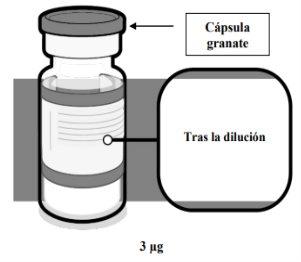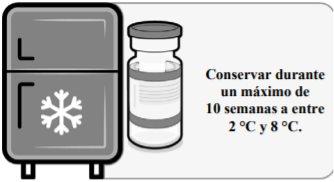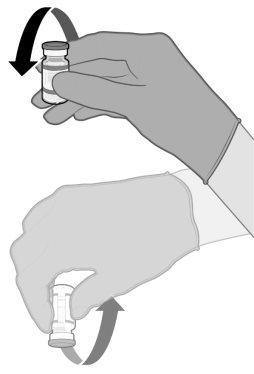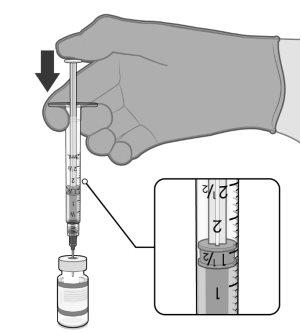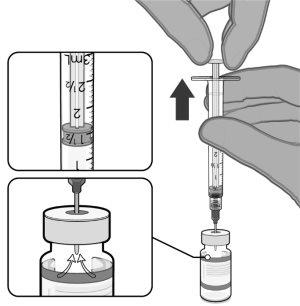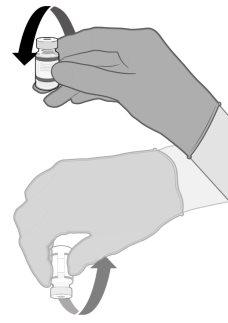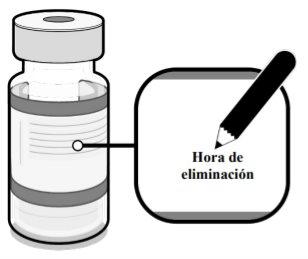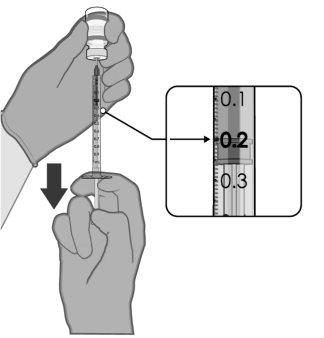
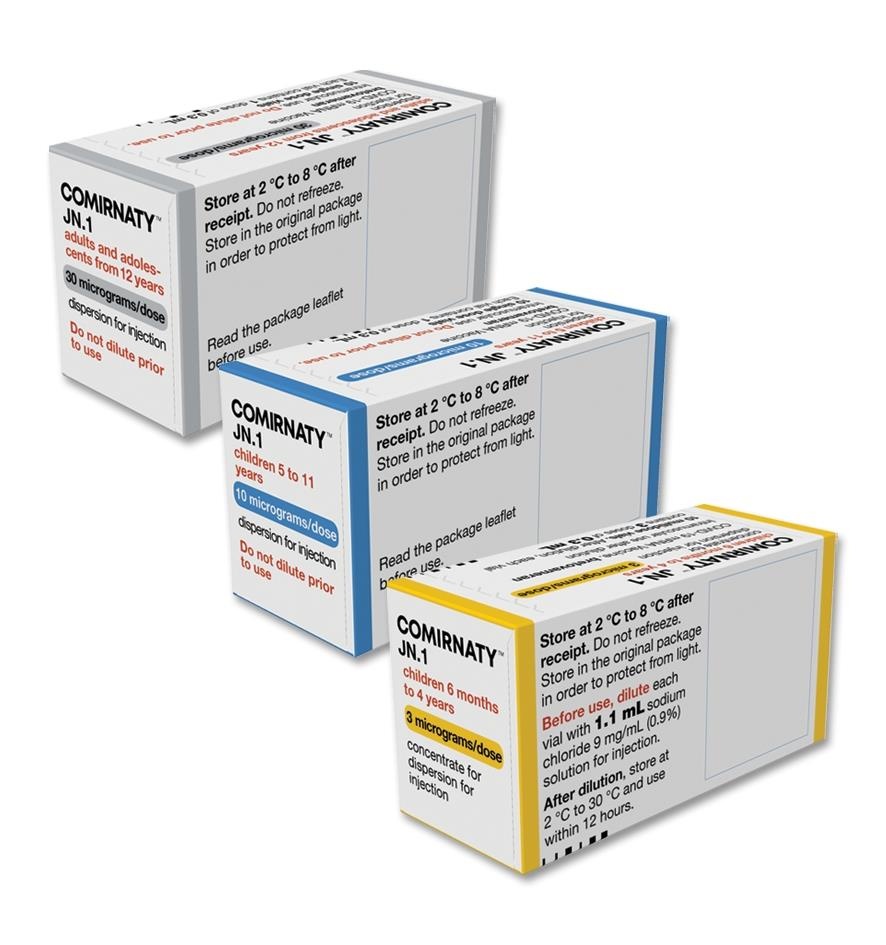
COMIRNATY 3 micrograms/dose injectable dispersion concentrate

Ask a doctor about a prescription for COMIRNATY 3 micrograms/dose injectable dispersion concentrate

How to use COMIRNATY 3 micrograms/dose injectable dispersion concentrate
Introduction
Package Leaflet: Information for the User
Comirnaty 3 micrograms/dose concentrate for dispersion for injection
Infants and children from 6 months to 4 years
mRNA COVID-19 vaccine (with modified nucleosides)
tozinameran
This medicine is subject to additional monitoring, which will allow for quicker identification of new safety information. You can help by reporting any side effects your child may have. The last part of section 4 will tell you how to report side effects.
Read all of this leaflet carefully before your child receives this vaccine because it contains important information for you.
- Keep this leaflet, you may need to read it again.
- If you have any further questions, ask your doctor, pharmacist, or nurse.
- If your child experiences any side effects, talk to your doctor, pharmacist, or nurse, even if they are not listed in this leaflet. See section 4.
Contents of the pack
- What is Comirnaty and what is it used for
- What you need to know before your child starts receiving Comirnaty
- How Comirnaty is administered
- Possible side effects
- Storage of Comirnaty
- Contents of the pack and further information
1. What is Comirnaty and what is it used for
Comirnaty is a vaccine used to prevent COVID-19 caused by SARS-CoV-2.
Comirnaty 3 micrograms/dose concentrate for dispersion for injection is administered to infants and children from 6 months to 4 years of age.
The vaccine makes the immune system (the body's natural defenses) produce antibodies and blood cells that fight the virus, providing protection against COVID-19.
Because Comirnaty does not contain the virus to produce immunity, it cannot give your child COVID-19.
2. What you need to know before your child starts receiving Comirnaty
Comirnaty must not be administered
- if your child is allergic to the active substance or to any of the other ingredients of this medicine (listed in section 6).
Warnings and precautions
Talk to your doctor, pharmacist, or nurse before your child receives the vaccine if your child:
- has ever had a severe allergic reaction or breathing problems after injection of any other vaccine or after Comirnaty was administered in the past;
- is nervous about the vaccination process or has fainted after an injection with a needle;
- has a severe illness or infection with high fever. However, your child can be vaccinated if they have a mild fever or an upper respiratory tract infection such as a cold;
- has a bleeding disorder, bruises easily, or is taking a medicine to prevent blood clots;
- has a weakened immune system due to a disease such as HIV or due to medication, such as corticosteroids, that affect the immune system.
There is an increased risk of myocarditis (inflammation of the heart muscle) and pericarditis (inflammation of the outer lining of the heart) after vaccination with Comirnaty (see section 4). These disorders can occur within a few days of vaccination and have mainly occurred within 14 days. They have been observed more frequently after the second dose of vaccination and more frequently in young males. The risk of myocarditis and pericarditis appears to be lower in children between 5 and 11 years of age than in those between 12 and 17 years of age. After vaccination, you should be alert to the signs of myocarditis and pericarditis, such as difficulty breathing, palpitations, and chest pain, and seek immediate medical attention if they occur.
As with any vaccine, Comirnaty may not completely protect all people who receive it, and it is not known how long you will be protected.
The efficacy of Comirnaty, even after a third dose, may be lower in immunocompromised individuals. In these cases, you should continue to maintain physical precautions to help prevent COVID-19. Additionally, your close contacts should be vaccinated as appropriate. Discuss individual recommendations with your doctor.
Children
Comirnaty 3 micrograms/dose concentrate for dispersion for injection is not recommended for use in children under 5 years and over 11 years of age. A pediatric presentation is available for children from 5 to 11 years of age. For more information, see the package leaflet for Comirnaty 10 micrograms/dose concentrate for dispersion for injection.
Comirnaty is not recommended for use in infants under 6 months of age.
Other medicines and Comirnaty
Tell your doctor or pharmacist if your child is using, has recently used, or might use any other medicines or has recently received any other vaccine.
Pregnancy and breastfeeding
Comirnaty 3 micrograms/dose concentrate for dispersion for injection is not indicated for persons over 5 years of age.
For detailed information on use in persons over 5 years of age, see the package leaflet for Comirnaty 30 micrograms/dose concentrate for dispersion for injection, Comirnaty 30 micrograms/dose dispersion for injection, or Comirnaty 10 micrograms/dose concentrate for dispersion for injection.
Driving and using machines
Some of the effects of vaccination mentioned in section 4 (Possible side effects) may temporarily affect the ability to use machines or perform activities such as cycling. Wait until these effects have disappeared before resuming activities that require your full attention.
3. How Comirnaty is administered
Comirnaty is administered after dilution as an injection of 0.2 ml into a muscle of the thigh in infants from 6 to less than 12 months of age. In infants and children 1 year of age and older, Comirnaty is administered after dilution as an injection of 0.2 ml into a muscle of the thigh or into a muscle of the arm.
Your child will receive three injections.
The second dose of the same vaccine is recommended to be given 3 weeks after the first dose, followed by a third dose at least 8 weeks after the second dose to complete the vaccination schedule.
If a child turns 5 years of age between their doses of the vaccination schedule, they should complete the schedule with the same dose level of 3 micrograms.
If you have any further questions on the use of Comirnaty, ask your doctor, pharmacist, or nurse.
4. Possible side effects
Like all vaccines, Comirnaty can cause side effects, although not everybody gets them.
Very common side effects:may affect more than 1 in 10 people
- irritability (between 6 months and <2 years)< li>
- injection site: pain/pain on touch, swelling
- fatigue
- headache
- sleepiness (between 6 months and <2 years)< li>
- muscle pain
- chills
- joint pain
- diarrhea
- fever
Common side effects:may affect up to 1 in 10 people
- nausea
- vomiting
- redness at the injection site («very common» in children from 6 months to 11 years of age)
Uncommon side effects:may affect up to 1 in 100 people
- enlarged lymph nodes (more frequently observed after the booster dose)
- malaise
- arm pain
- insomnia
- itching at the injection site
- allergic reactions such as skin rash («common» in children from 6 months to <2 years of age) or itching< li>
- feeling weak or lack of energy/sleepiness
- decreased appetite («very common» in children from 6 months to <2 years of age)< li>
- dizziness
- excessive sweating
- night sweats
Rare side effects:may affect up to 1 in 1,000 people
- temporary paralysis of one side of the face
- allergic reactions such as hives or swelling of the face
Very rare side effects:may affect up to 1 in 10,000 people
- inflammation of the heart muscle (myocarditis) or inflammation of the outer lining of the heart (pericarditis) which can lead to difficulty breathing, palpitations, or chest pain
Frequency not known(cannot be estimated from the available data)
- severe allergic reaction
- extensive swelling of the limb in which the vaccine was administered
- swelling of the face (swelling of the face may occur in patients who have received dermal filler injections)
- a skin reaction that causes red spots or patches on the skin, which may look like a target or a «bull's eye» with a dark red center surrounded by lighter red rings (erythema multiforme)
- abnormal sensation in the skin, such as tingling or prickling (paresthesia)
- reduced sensitivity, especially in the skin (hypoesthesia)
- heavy menstrual bleeding (most cases do not appear to be serious and are temporary)
Reporting of side effects
If your child experiences any side effects, talk to your doctor, pharmacist, or nurse, even if they are not listed in this leaflet. You can also report side effects directly through the national reporting system listed in Appendix V and include the batch number if known. By reporting side effects, you can help provide more information on the safety of this medicine.
5. Storage of Comirnaty
Keep this medicine out of the sight and reach of children.
The following information on storage, expiry, and use and handling is intended for healthcare professionals.
Do not use this medicine after the expiry date which is stated on the carton and on the label after EXP. The expiry date is the last day of the month shown.
Store in a freezer at –90 °C to –60 °C.
Store in the original package to protect from light.
The vaccine is received frozen at –90 °C to –60 °C. The frozen vaccine can be stored at –90 °C to –60 °C or at 2 °C to 8 °C after receipt.
If stored frozen at –90 °C to –60 °C, the vaccine cartons of 10 vials can be thawed at 2 °C to 8 °C for 2 hours or individual vials can be thawed at room temperature (up to 30 °C) for 30 minutes.
Once removed from the freezer, the unopened vial can be stored and transported refrigerated at 2 °C to 8 °C for a maximum of 10 weeks; do not exceed the expiry date printed (EXP). The outer packaging should be marked with the new discard date at 2 °C to 8 °C. Once thawed, the vaccine cannot be re-frozen.
Before use, unopened vials can be stored for a maximum of 12 hours at temperatures between 8 °C and 30 °C.
Thawed vials can be handled under ambient light conditions.
After dilution, store the vaccine at 2 °C to 30 °C and use within 12 hours, including a maximum of 6 hours transport time. Discard unused vaccine.
Do not use this vaccine if you notice visible particles in the dilution or a color change.
Medicines should not be disposed of via wastewater or household waste. Ask your pharmacist how to dispose of medicines no longer required. This will help protect the environment.
6. Container Contents and Additional Information
Comirnaty Composition
- The active ingredient is a COVID-19 mRNA vaccine called tozinameran. After dilution, the vial contains 10 doses of 0.2 ml with 3 micrograms of tozinameran each.
- The other components are:
- ((4-hydroxybutyl)azanediyl)bis(hexane-6,1-diyl)bis(2-hexyldecanoate) (ALC-0315)
- 2-[(polyethylene glycol)-2000]-N,N-ditetradecylacetamide (ALC-0159)
- 1,2-distearoyl-sn-glycero-3-phosphocholine (DSPC)
- cholesterol
- tromethamine
- hydrochloric acid
- sucrose
- water for injectable preparations
Product Appearance and Container Contents
The vaccine is a dispersion (pH: 6.9-7.9) of a white to off-white color, presented in a 10-dose multidose vial, transparent (Type I glass), 2 ml, with a rubber stopper and a flip-offplastic cap of a reddish color with an aluminum seal.
Container sizes: 10 vials
Only some container sizes may be marketed.
Marketing Authorization Holder
BioNTech Manufacturing GmbH
An der Goldgrube 12
55131 Mainz
Germany
Phone: +49 6131 9084-0
Fax: +49 6131 9084-2121
Manufacturers
BioNTech Manufacturing GmbH
Kupferbergterrasse 17-19
55116 Mainz
Germany
Pfizer Manufacturing Belgium NV
Rijksweg 12
2870 Puurs
Belgium
You can request more information about this medicinal product by contacting the local representative of the marketing authorization holder.
België/Belgique/Belgien Luxemburg/Luxembourg Pfizer S.A./N.V. Tél/Tel: +32 (0)2 554 62 11 | Lietuva Pfizer Luxembourg SARL filialas Lietuvoje Tel. +370 52 51 4000 |
| Magyarország Pfizer Kft Tel: +36 1 488 3700 |
Ceská republika Pfizer, spol. s r.o. Tel: +420 283 004 111 | Malta Vivian Corporation Ltd. Tel: +35621 344610 |
Danmark Pfizer ApS Tlf: +45 44 201 100 | Norge Pfizer AS Tlf: +47 67 526 100 |
Deutschland BioNTech Manufacturing GmbH Tel: +49 6131 90840 | Nederland Pfizer BV Tel: +31 (0)10 406 43 01 |
Eesti Pfizer Luxembourg SARL Eesti filiaal Tel: +372 666 7500 | Österreich Pfizer Corporation Austria Ges.m.b.H Tel: +43 (0)1 521 15-0 |
Ελλάδα Pfizer Ελλάς A.E. Τηλ.: +30 210 6785 800 | Polska Pfizer Polska Sp. z o.o. Tel.: +48 22 335 61 00 |
España Pfizer, S.L. Tel:+ 34914909900 | Portugal Laboratórios Pfizer, Lda. Tel: +351 21 423 5500 |
France Pfizer Tél +33 1 58 07 34 40 | România Pfizer Romania S.R.L Tel: +40 (0) 21 207 28 00 |
Hrvatska Pfizer Croatia d.o.o. Tel: +385 1 3908 777 | Slovenija Pfizer Luxembourg SARL Pfizer, podružnica za svetovanje s podrocja farmacevtske dejavnosti, Ljubljana Tel.: +386 (0) 1 52 11 400 |
Ireland Pfizer Healthcare Ireland Tel: 1800 633 363 (toll free) +44 (0)1304 616161 | Slovenská republika Pfizer Luxembourg SARL, organizacná zložka Tel: +421 2 3355 5500 |
Ísland Icepharma hf Simi: +354 540 8000 | Suomi/Finland Pfizer Oy Puh/Tel: +358 (0)9 430 040 |
Italia Pfizer S.r.l. Tel: +39 06 33 18 21 | Sverige Pfizer AB Tel: +46 (0)8 550 520 00 |
Κύπρος Pfizer Ελλάς Α.Ε. (Cyprus Branch) Τηλ: +357 22 817690 | United Kingdom (Northern Ireland) Pfizer Limited Tel: +44 (0) 1304 616161 |
Latvija Pfizer Luxembourg SARL filiale Latvija Tel.: +371 670 35 775 |
Date of Last Revision of this Leaflet:
Scan the code with a mobile device to obtain the leaflet in different languages.

URL: www.comirnatyglobal.com
Detailed information on this medicinal product is available on the European Medicines Agency website: http://www.ema.europa.eu.
The leaflet can be found in all languages of the European Union/European Economic Area on the European Medicines Agency website.
This information is intended for healthcare professionals only:
Administer Comirnaty by intramuscular injection after dilution in a regimen of 3 doses (0.2 ml each); the second dose of the same vaccine is administered 3 weeks after the first dose, followed by a third dose at least 8 weeks after the second dose to complete the vaccination regimen.
Traceability
In order to improve the traceability of biological medicinal products, the name and batch number of the administered product must be clearly recorded.
Handling Instructions
Comirnaty 3 micrograms/dose must be prepared by a healthcare professional using aseptic technique to ensure the sterility of the prepared dispersion.
VERIFICATION OF COMIRNATY 3 MICROGRAMS/DOSE CONCENTRATE FOR INJECTABLE DISPERSION (INFANTS AND CHILDREN FROM 6 MONTHS TO 4 YEARS OF AGE) VIAL | |
|
|
HANDLING BEFORE USE OF COMIRNATY 3 MICROGRAMS/DOSE CONCENTRATE FOR INJECTABLE DISPERSION (INFANTS AND CHILDREN FROM 6 MONTHS TO 4 YEARS OF AGE) | |
|
Make sure the vials are completely thawed before using them.
|
MIXING BEFORE DILUTION OF COMIRNATY 3 MICROGRAMS/DOSE CONCENTRATE FOR INJECTABLE DISPERSION (INFANTS AND CHILDREN FROM 6 MONTHS TO 4 YEARS OF AGE) | |
Gently 10 times |
|
DILUTION OF COMIRNATY 3 MICROGRAMS/DOSE CONCENTRATE FOR INJECTABLE DISPERSION (INFANTS AND CHILDREN FROM 6 MONTHS TO 4 YEARS OF AGE) | |
2.2 ml of a 9 mg/ml (0.9%) sodium chloride injectable solution. |
|
Draw the plunger up to 2.2 ml to extract air from the vial. |
|
Gently 10 times |
|
Record the date and time as appropriate. It must be used within 12 hours after dilution. |
|
PREPARATION OF INDIVIDUAL 0.2 ML DOSES OF COMIRNATY 3 MICROGRAMS/DOSE CONCENTRATE FOR INJECTABLE DISPERSION (INFANTS AND CHILDREN FROM 6 MONTHS TO 4 YEARS OF AGE) | |
0.2 ml of diluted vaccine |
To extract 10 doses from the same vial, use syringes and/or needles with a low dead volume. The combination of syringe and needle with a low dead volume should have a dead volume of 35 microliters or less. If conventional syringes and needles are used, there may not be enough volume to extract 10 doses from the same vial.
|
Disposal
Disposal of unused medicinal products and all materials that have come into contact with them will be carried out in accordance with local regulations.
- Country of registration
- Active substance
- Prescription requiredYes
- Manufacturer
- This information is for reference only and does not constitute medical advice. Always consult a licensed doctor before taking any medication. Oladoctor is not responsible for medical decisions based on this content.
- Alternatives to COMIRNATY 3 micrograms/dose injectable dispersion concentrateDosage form: INJECTABLE, 0.1 mg/mlActive substance: covid-19, RNA-based vaccineManufacturer: Biontech Manufacturing GmbhPrescription requiredDosage form: INJECTABLE, 0.3 micrograms/0.3 mlActive substance: covid-19, RNA-based vaccineManufacturer: Biontech Manufacturing GmbhPrescription requiredDosage form: INJECTABLE, 10 microgramsActive substance: covid-19, RNA-based vaccineManufacturer: Biontech Manufacturing GmbhPrescription required
Online doctors for COMIRNATY 3 micrograms/dose injectable dispersion concentrate
Discuss dosage, side effects, interactions, contraindications, and prescription renewal for COMIRNATY 3 micrograms/dose injectable dispersion concentrate – subject to medical assessment and local rules.





